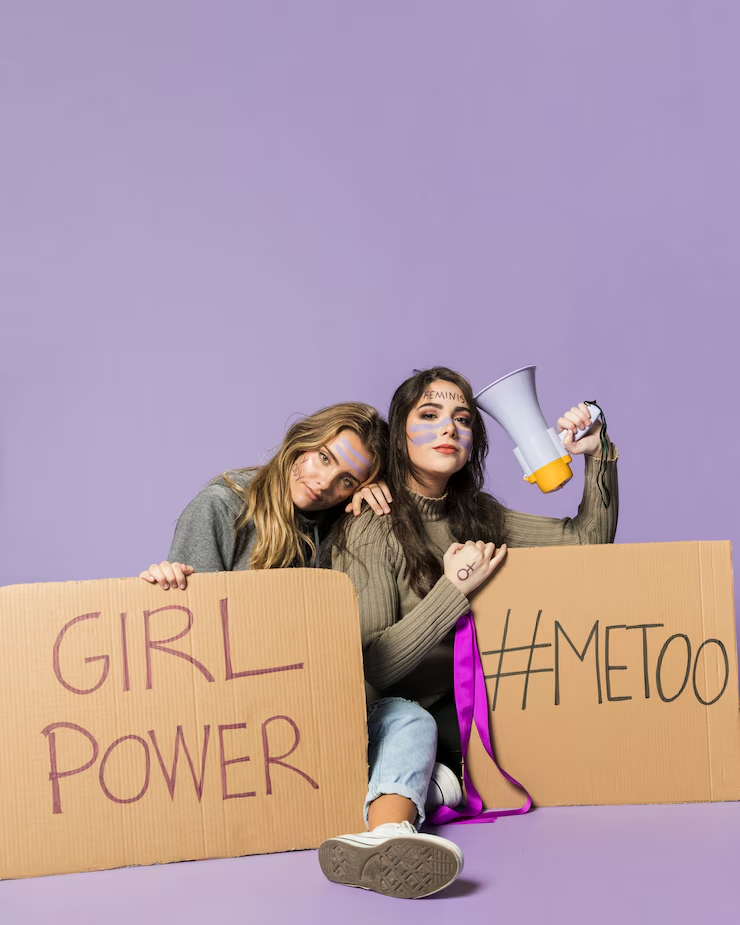This year’s International Women’s Day (IWD) on March 8th falls at a time when global political shifts are having a profound impact on marginalized communities. For industries like public relations (PR), which play a pivotal role in shaping narratives, IWD offers a moment to reflect, reimagine, and push for change. But with an industry that thrives on storytelling, slogans, and marketing, it’s worth asking: has IWD lost its impact amidst performative gestures? And most importantly for our industry, how can PR become a true agent of change in advancing gender equality?
Themes Highlighted for IWD 2025
A simple Google search reveals multiple themes linked to IWD 2025. The main theme showcased by the International Women’s Day organization is “Accelerate Action,” a catchy phrase promoted by a corporate-driven platform that profits from awareness campaigns. On the other hand, the United Nations (UN) pushes a more substantial and values-driven theme, “For ALL women and girls: Rights. Equality. Empowerment.” Some organizations also align with UN Women’s campaign, “March Forward.”
While the IWD website’s theme is tailor-made for social media and deeply marketable, experts suggest this approach risks veiling the need for deeper, genuine engagement. “Big corporations pay for polished, performative themes designed for mass appeal, but real change goes beyond a catchy slogan,” says Advita Patel, Director of Comms Rebel. The basics of meaningful change in PR are not about campaigns but committing to action.
What’s the Role of PR in Driving Equality?
PR professionals understand better than anyone how powerful narratives influence public opinion. Emma Heley, Co-Founder and Managing Director at Thinking Hat Media, points out that PR is about “shaping narratives, influencing opinions, and mobilizing action.” This positions the industry perfectly to create real impact, especially in areas like equal rights and advancing leadership opportunities for women.
But is PR ready to step up? Women in the PR industry highlight some troubling realities, making it clear that reflection alone isn’t enough—we need action.
Persistent Gender Barriers in PR
Decades of data have told the same story. Public relations is largely a “feminized” profession, with women dominating entry-level and mid-level roles. Yet, the path to senior leadership remains frustratingly elusive for many women. Sarah Waddington, Director of Socially Mobile, recently revisited the same gender disparity research she carried out 20 years ago. Little has changed since her initial findings.
A study released in collaboration with the CIPR for IWD 2025 found over 3,900 women in public relations in England and Wales have either left the industry mid-career or failed to climb to senior positions. These missing women represent thousands of careers interrupted by structural, cultural, and societal barriers:
- Cultural Barriers: Persistent “boys’ club” environments place men at the top, while PR work is dismissed as “soft.”
- Structural Inequality: Women face limited pathways for development, lack of maternity support, and rigid work structures.
- Societal Pressures: Disproportionate caregiving responsibilities force career compromises, often due to the high cost of childcare.
Waddington advocates for systemic change, saying only comprehensive efforts addressing barriers and biases will bring substantial progress.
Inclusivity Within Inclusivity
The conversation around gender equality cannot stop at women alone. Race, ethnicity, and individual identities add another layer of inequality to address. Zoe Mumba Beard, Head of PR & Communications at Bitmovin, points to the industry’s failure to ensure fair representation of racial diversity.
Highlighting PRWeek’s report showing an ethnicity pay gap of over 25%, Beard calls for more transparency, actionable steps, and commitment to organizations like the Taylor Bennett Foundation and UK Black Comms Network. “Not all women are the same,” Beard emphasizes, and PR must recognize and reflect this intersectionality.
Steps Forward for Women in PR
While change is slow, women across the industry are pushing boundaries and offering solutions to systemic challenges.
- Expand Flexible Working Options
Hilary Collins from Big Wave PR believes flexible working has already opened up opportunities for women to balance career progression with parenting. Yet, cultural biases need dismantling further to ensure remote and part-time workers are not overlooked for promotions.
- Support Women in Leadership Roles
Angela Yore of SkyParlour stresses the importance of mentorship programs designed specifically for women in traditionally male-dominated spaces like tech PR. “Mentorship opens doors for the next generation of leaders,” Yore states, underlining her experience with the European Women in Payments Network.
- Invest in Female-led Agencies and Programs
Hayley Knight of BE YELLOW cites the rise of female-founded agencies as evidence that women are creating new pathways for leadership. However, she calls for more structured programs, mentorships, and policies offering working mothers opportunities to advance careers.
- Shift Societal Expectations Around Caregiving
The burden of caregiving still disproportionately affects women, as Sarah Woodhouse from AMBITIOUS points out. Major shifts like aligning school hours with work schedules and offering affordable childcare need government intervention to create lasting, equitable change.
- Build Confidence and Authenticity
Emma Heley argues women in PR need to trust their skills and stop comparing themselves to others. “Authenticity is a superpower,” she says, encouraging women to lead with their own voices rather than shrinking back in the presence of institutional or personal biases.
The Industry’s Responsibility
For the PR industry to become a true ally in women’s empowerment, brands and agencies must go beyond performative campaigns and marketing slogans. This requires long-term investments in diverse talent pipelines, inclusive workplace cultures, and clear policies that both recognize barriers and actively work to break them down.
International Women’s Day 2025 calls for more than reflecting on the work left undone. It’s a time to realign, take genuine steps toward inclusivity, and ensure all voices, identities, and talents have a seat at decision-making tables.
Because empowering one group doesn’t weaken another—in fact, it strengthens us all.









